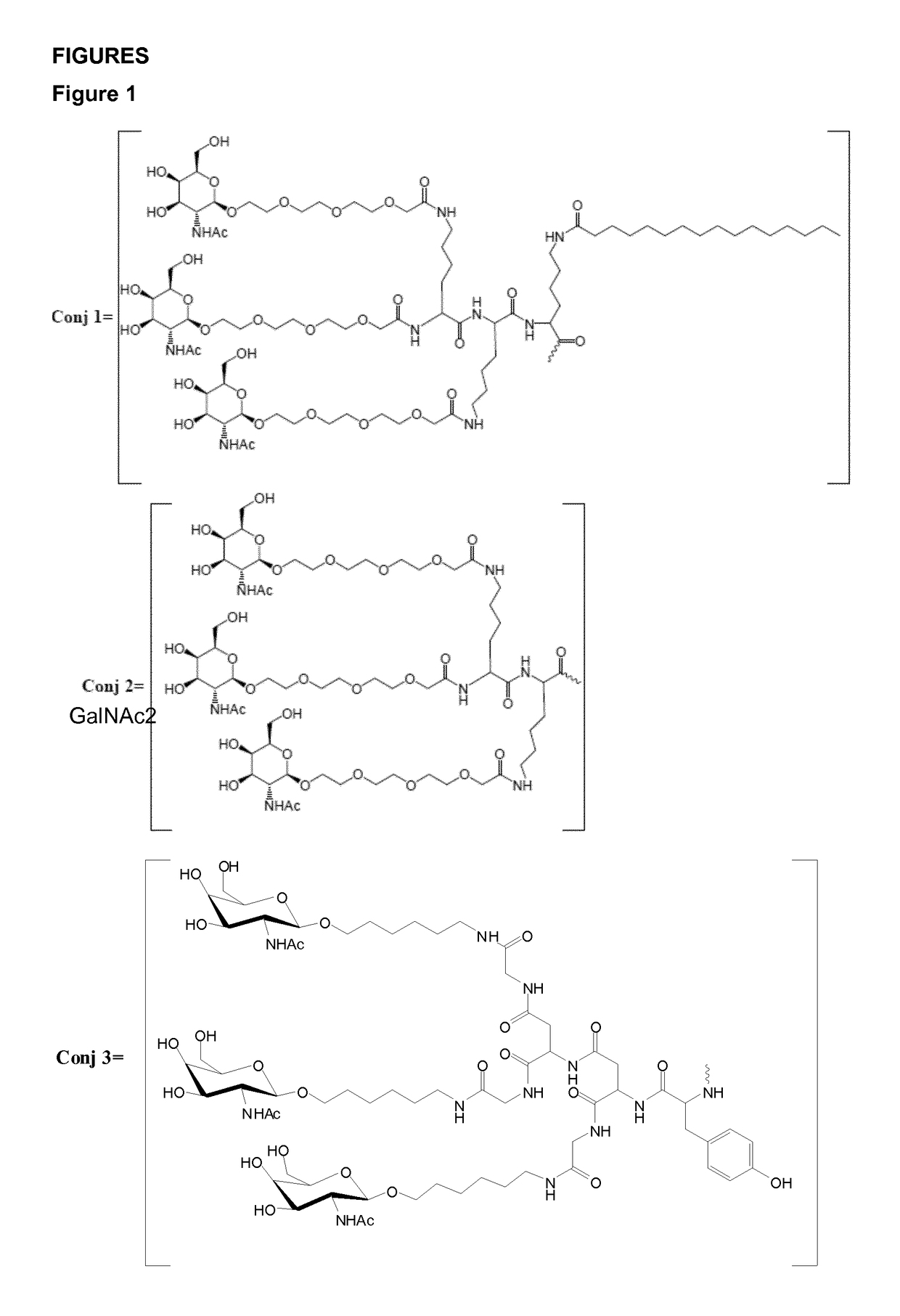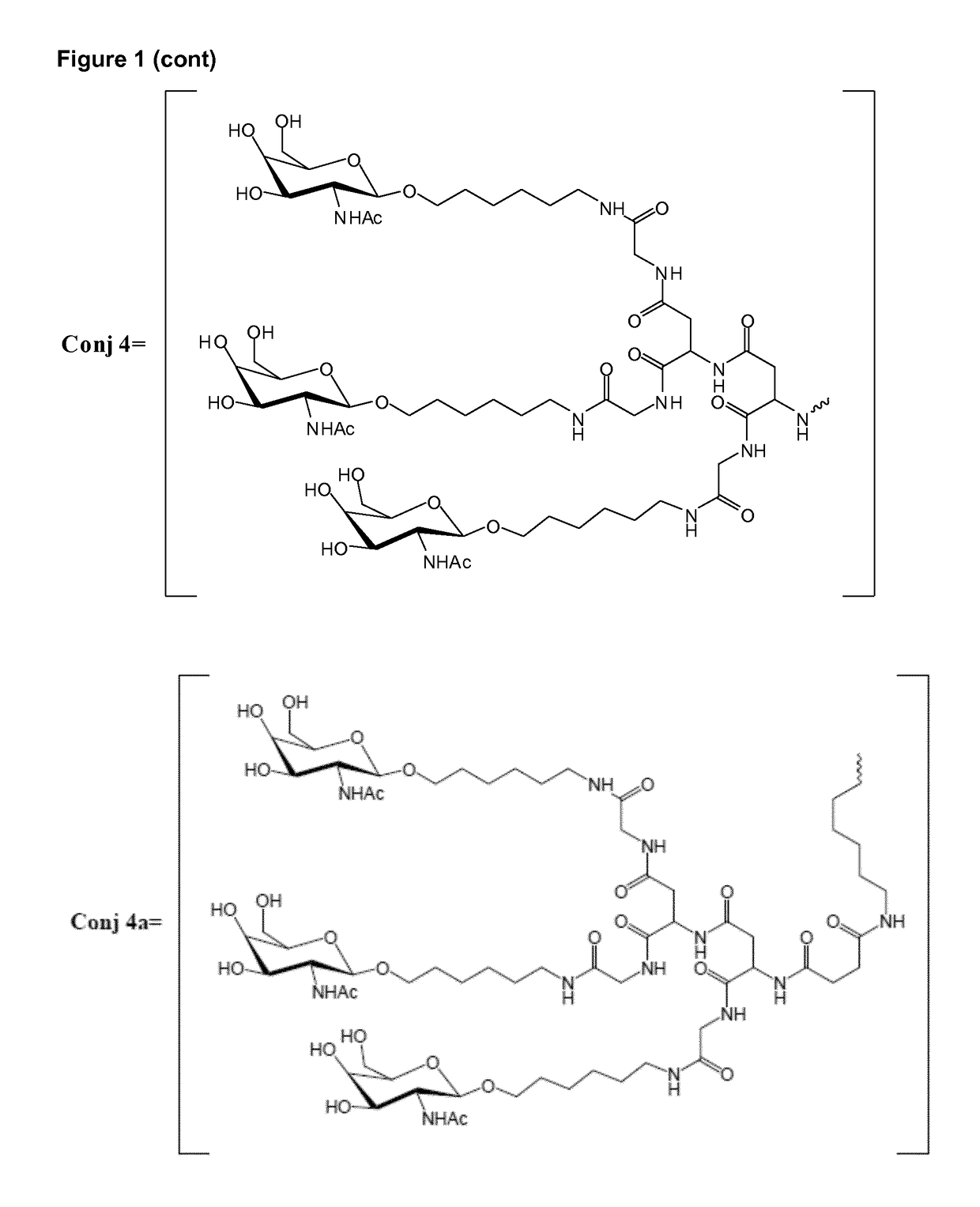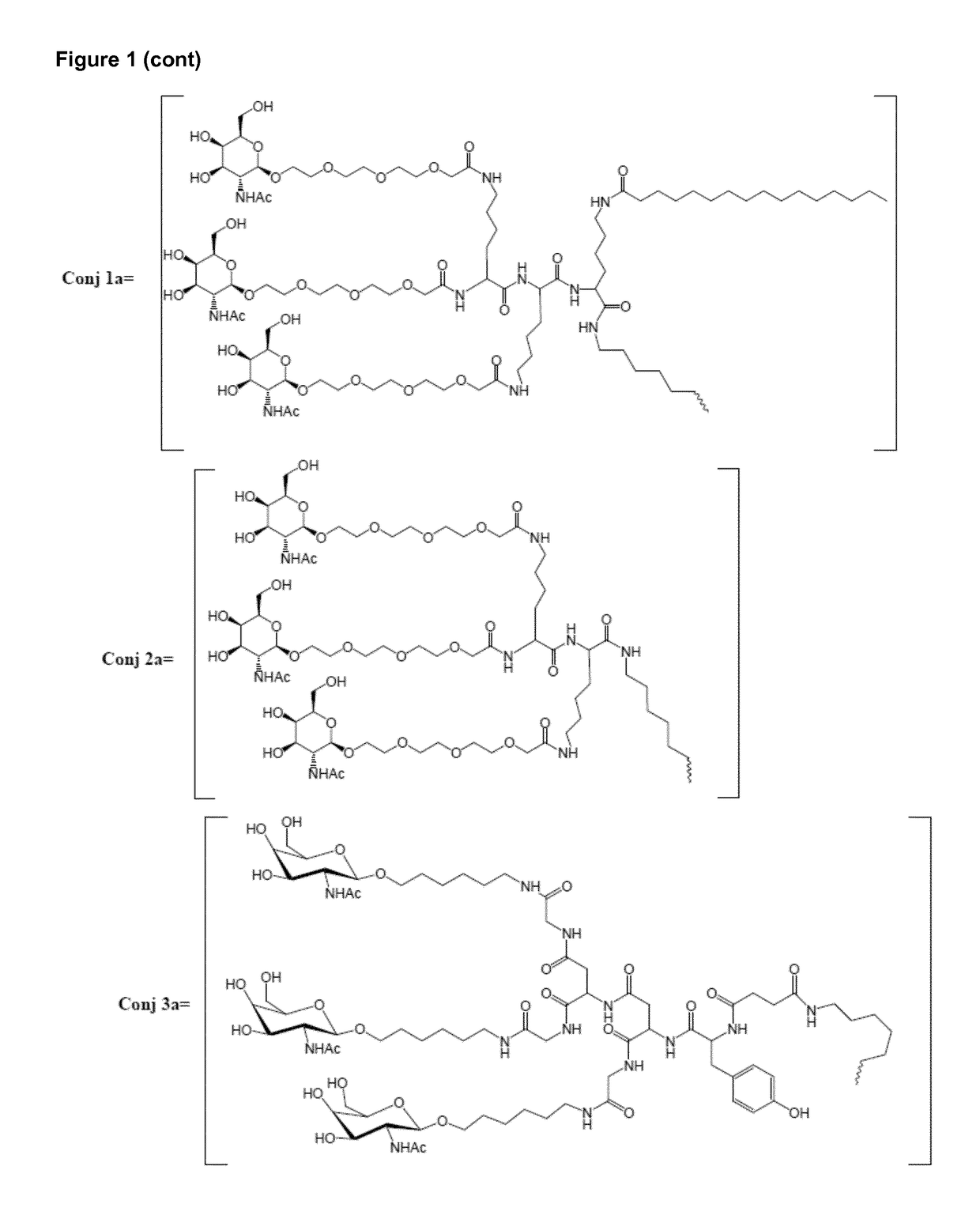Oligonucleotide conjugates
a technology of oligonucleotide and conjugate, which is applied in the field ofoligomeric compounds and conjugates, can solve problems such as acute kidney injury, and achieve the effect of reducing toxicity risk and reducing kidney toxicity
- Summary
- Abstract
- Description
- Claims
- Application Information
AI Technical Summary
Benefits of technology
Problems solved by technology
Method used
Image
Examples
example 1
New PCSK9 Target Motif Discovery
[0440]521 anti-PCSK9 antisense oligonucleotides—all with three locked nucleic acids flanking ten DNAs, i.e with 16-mer LNA gap-mer design-specific for human and primate PCSK9 were designed and synthesized. The human cell line 15PC3 was incubated for three days with either mock or the locked nucleic acid-modified oligonucleotides targeted to human PCSK9 at concentration 0.3 μM. Each anti-PCSK9 oligonucleotide was tested in three independent experiments. PCSK9 mRNA levels were quantitated from extracted RNA using real-time PCR as described, and presented normalized to β-actin mRNA and relative to average levels in twelve mock treated samples in FIG. 8, with a close-up of a sub-set of the most potent molecules in FIG. 9.
example 2
In Vitro mRNA Knockdown
[0441]The human cell line 15PC3 was incubated for 3 days with either mock or locked nucleic acid modified oligonucleotides with SEQ IDs 1 to 8 targeted to human PCSK9 at concentrations 0.0012, 0.06, 0.3 and 1.5 μM. PCSK9 mRNA levels were quantitated from extracted RNA using real-time PCR as described, and presented relative to average levels in four mock treated samples in FIG. 10. For each oligonucleotide, potency, quantified as half maximal effective concentration (EC50), was determined by least squares fitting of the Hill equation in two-parameter logistic form with lower limit fixed at 0% and upper limit fixed at 100%, as EC50=estimate±standard deviation.
example 3
In Vivo ALT Levels
[0442]Four week old female NMRI mice (Taconic, Denmark), weighing approximately 20 g at arrival, were injected intravenously once with either saline or locked nucleic acid-modified, cholesterol-conjugated, oligonucleotides with SEQ IDs 9 to 16 targeted to human PCSK9 at doses 7.5 and 15 mg / kg. The mice were sacrificed 7 days following administration and serum levels of alanine aminotransferase (ALT) determined using an enzymatic assay (Horiba ABX Diagnostics). For each treatment group of five mice, mean and standard deviations were calculated and presented in FIG. 11 relative to mean levels in saline treated mice. ALT rises were noted at both concentrations for some, but not all, cholesterol conjugated molecules. Several of the compounds, such as SEQ ID NO 9 and 10, did not enhance ALT in mice in a clinically meaningful manner even when cholesterol was used as a conjugate to enhance the uptake of compounds in the liver.
PUM
| Property | Measurement | Unit |
|---|---|---|
| pH | aaaaa | aaaaa |
| Tm | aaaaa | aaaaa |
| temperature | aaaaa | aaaaa |
Abstract
Description
Claims
Application Information
 Login to View More
Login to View More - R&D
- Intellectual Property
- Life Sciences
- Materials
- Tech Scout
- Unparalleled Data Quality
- Higher Quality Content
- 60% Fewer Hallucinations
Browse by: Latest US Patents, China's latest patents, Technical Efficacy Thesaurus, Application Domain, Technology Topic, Popular Technical Reports.
© 2025 PatSnap. All rights reserved.Legal|Privacy policy|Modern Slavery Act Transparency Statement|Sitemap|About US| Contact US: help@patsnap.com



